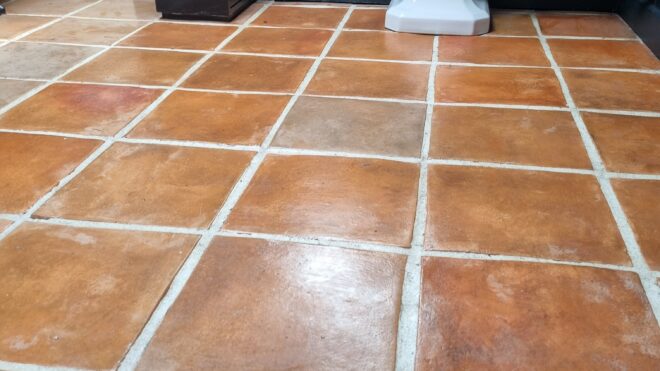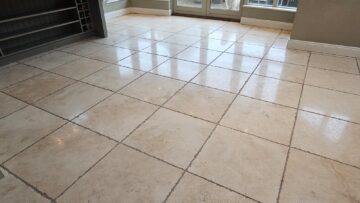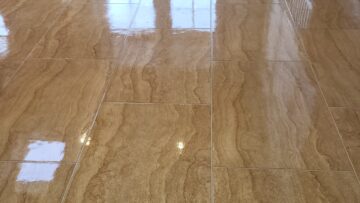Terracotta Floor Cleaning Technologies And The Best Way Of Maintaining It
Terracotta, which translates to “baked earth” in Italian, is a natural and timeless flooring material that has graced homes and public spaces for thousands of years. From ancient Roman villas to rustic farmhouses and modern design concepts, its rich, earthy tones and unique character have made it a favored choice for those seeking a blend of warmth, authenticity, and enduring elegance. The appeal of a terracotta floor lies not only in its beautiful aesthetic, which ranges from deep red to warm orange hues, but also in its unparalleled ability to create a cozy and inviting atmosphere. Unlike mass-produced tiles, terracotta’s handcrafted nature means each tile possesses its own unique imperfections, textures, and color variations, making every floor a one-of-a-kind work of art. This natural charm, combined with its renowned durability and ease of maintenance when properly cared for, makes terracotta a beloved choice for both residential and commercial spaces. However, its beauty is directly tied to its porous nature, which requires a specific and professional approach to cleaning and sealing to protect its integrity and preserve its classic look. This article will serve as a comprehensive guide to the technologies and processes involved in the cleaning, stripping, impregnating, and polishing of all types of terracotta floors, ensuring they remain a source of pride and beauty for generations.
What Is A Terracotta Floor?
A terracotta floor is a type of tile made from a specific clay that is shaped and then fired at high temperatures. The rich, reddish-brown color is a result of the high iron content in the clay, which oxidizes during the firing process. What makes a terracotta floor so appealing is its raw, unglazed, and organic beauty. Each tile has a slightly different shade, texture, and patina, which contributes to the floor’s overall warmth and character. This is a stark contrast to other types of flooring, such as ceramic or porcelain tiles, which are often glazed and have a uniform, manufactured appearance. The porous nature of terracotta, however, is both its greatest asset and its greatest vulnerability. On the one hand, this porosity allows the tiles to breathe and absorb moisture, which can make them feel cool underfoot in warm climates. On the other hand, this same absorbency makes them highly susceptible to staining and dirt penetration if left unprotected. Therefore, a properly sealed terracotta floor is essential, as the sealer acts as a crucial barrier between the porous tile and the daily foot traffic, spills, and dirt that could otherwise cause permanent damage. This porous quality also explains why terracotta floors, when properly sealed, are surprisingly easy to maintain; the surface becomes non-absorbent, and spills can be wiped away with ease.
Why Should You Seal It?
Sealing a terracotta floor is not an optional step; it is a critical necessity for preserving its beauty and longevity. The natural absorbency of unsealed terracotta tiles means they will quickly soak up any liquid spilled on them, leading to dark, permanent stains. They are also prone to absorbing dirt, grease, and other contaminants from regular foot traffic, which can make them look dull, dirty, and worn over time. A professional sealing application creates a durable, protective barrier on and within the tile, preventing these substances from penetrating the surface. This barrier makes the floor significantly more resistant to stains and simplifies the cleaning process, as dirt and spills can be easily wiped away without the risk of absorption. The choice of sealer is also a significant factor in the final appearance of the floor. There are two primary types of terracotta floor sealers: water-based and solvent-based. Water-based sealers penetrate the tile to create an invisible barrier, leaving the floor with a natural, uncolored, and matte finish. This is the ideal choice for those who want to preserve the original, earthy look of the terracotta. In contrast, solvent-based terracotta sealers penetrate deeper, creating a finish that darkens the tile, giving it a rich, deep, and often glossy look. This type of sealer is excellent for enhancing the colors and veins of the terracotta, making them more vibrant and pronounced.
Best Terracotta Floor Sealers
Choosing the right terracotta floor sealer is crucial for achieving the desired look and ensuring long-lasting protection. The market offers a wide range of products, but they generally fall into two categories: water-based and solvent-based. Water-based terracotta floor sealers are a popular choice for those who prefer a natural, un-enhanced look. These sealers are typically easy to apply, have low odor, and dry quickly. They work by penetrating the pores of the terracotta, creating a protective barrier without altering the tile’s original color or sheen. This results in a natural, matte finish that highlights the authentic beauty of the terracotta. On the other hand, solvent-based terracotta floor sealers are known for their ability to dramatically enhance the color of the tiles. These sealers are often a blend of natural oils or synthetic resins that soak deeply into the terracotta, giving it a wet, rich, and deep appearance. The resulting finish can be matte or high-gloss, depending on the product, and it provides an excellent level of protection against stains and moisture. A key consideration for both types of sealers is their breathability. A high-quality sealer will allow water vapor to escape from the tile and the subfloor, preventing moisture from becoming trapped and causing problems like efflorescence (white, powdery deposits). For this reason, professional floor cleaning services in Dublin and beyond often prefer specific, high-quality products that are formulated for maximum protection without compromising the integrity of the stone.
How To Strip Old Terracotta Floors
Before a terracotta floor can be properly sealed, any old sealers, waxes, or dirt buildup must be completely removed. This process, known as stripping, is a crucial step in terracotta floor restoration. The method for stripping depends on the type of sealer that was previously applied. For water-based or acrylic sealers, a water-based floor stripper is the most effective solution. These products are designed to emulsify and break down old polymer coatings, allowing them to be easily lifted and removed with a wet vacuum or mop. For floors that have been sealed with solvent-based lacquers or waxes, a more aggressive approach is often required. In these cases, a solvent-based floor stripper is necessary to dissolve the old sealer. This is a more complex and potentially hazardous process that should be handled with caution and proper ventilation. In some rare cases, particularly when a floor has multiple layers of thick, solvent-based lacquers or has been sealed with a non-breathable product that has yellowed and cracked, mechanical sanding may be the only way to effectively remove the old coating. This is a highly specialized process that requires professional expertise to avoid damaging the terracotta tiles. Once the stripping process is complete, the floor must be thoroughly rinsed with clean water and allowed to dry completely before the new sealer can be applied. A successful stripping job is the foundation of a successful sealing process, as any remaining residue from old sealers will prevent the new sealer from penetrating and bonding correctly.
How To Impregnate Terracotta Floors
Impregnating a terracotta floor is the process of applying the sealer to the stripped and clean surface. This step is where the floor is protected and its final appearance is determined. A terracotta floor can be easily impregnated with any sealer as long as all the old sealers were fully removed and the floor is bone dry. The choice of application method can influence the outcome and efficiency of the process. For large areas, a roller is often the most efficient tool for applying the sealer, as it allows for an even and quick application. For smaller, more detailed areas or for a more hands-on approach, a flat mop or even a soft cloth can be used. It is crucial to apply the sealer in a thin, even coat, working in small sections at a time to ensure complete coverage. The porous nature of the terracotta means the tiles will absorb the sealer, often requiring multiple coats to achieve full saturation and optimal protection. It is recommended to apply a second or even a third coat once the previous one is dry to the touch, as this builds up the protective barrier and enhances the durability of the seal. After the final coat has been applied and has dried, the floor should be left to cure for the manufacturer’s recommended time before it is subject to foot traffic. The impregnating process is a fundamental aspect of terracotta floor sealing and is what gives the floor its long-lasting resistance to stains and spills.
How To Polish Terracotta Floors
Terracotta floor polishing is the final step in enhancing the floor’s appearance and providing an extra layer of protection and shine. This process is particularly relevant for floors that have been sealed with a product that can be buffed to a gloss, such as a water-based floor polish. Unlike the initial sealing, which protects the core of the tile, polishing is a surface-level treatment that adds a beautiful sheen and helps to protect the underlying sealer. A terracotta floor can be easily polished and refreshed with water-based floor polishes, which are typically applied in thin coats with a flat mop and allowed to dry. Once the polish is dry, the floor can be buffed with a high-speed machine and a white floor pad. The white pad is a non-abrasive option that gently buffs the polish, creating a beautiful, even gloss without scratching or damaging the floor. For daily terracotta floor maintenance, using a neutral floor cleaner is paramount. A neutral cleaner will not strip away the polish or the sealer, ensuring the floor’s protection remains intact. It is also important to use as little water as possible during regular cleaning, as excessive moisture can degrade the sealer over time. The combination of a strong sealer and a regular polishing routine is the key to maintaining a beautiful and durable terracotta floor.
FAQ
How often should I have my terracotta floor professionally cleaned and sealed? The frequency of professional terracotta floor cleaning and sealing depends on the amount of foot traffic and usage. For residential floors, a professional sealing may be needed every 3-5 years. In high-traffic commercial settings, it may be required more frequently. Regular maintenance with the right cleaning products will help extend the life of the seal.
What is the best way to clean my terracotta floor on a daily basis? For daily or weekly cleaning, a simple sweep or vacuum is best to remove grit and dust. For mopping, use a pH-neutral floor cleaner specifically designed for sealed floors and use as little water as possible. Avoid using harsh or acidic cleaners, which will break down the sealer and damage the floor.
Can I use a solvent-based stripper on a floor that was sealed with a water-based product? Yes, a solvent-based stripper can be used to remove a water-based sealer, but it is often unnecessary and can be more difficult to work with. A water-based stripper is typically more effective and safer for removing water-based polymers and is the recommended product for this type of job.
Is terracotta floor sealing a DIY project? While it is possible to do it yourself, terracotta floor sealing is a complex process that requires specific knowledge and products. Proper stripping, cleaning, and application are crucial for a successful outcome. Professional floor cleaning services, especially those in Dublin with experience in terracotta floor restoration, have the right equipment and expertise to ensure the job is done correctly and safely.



